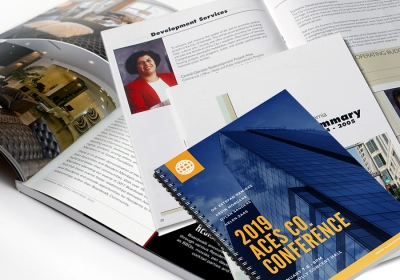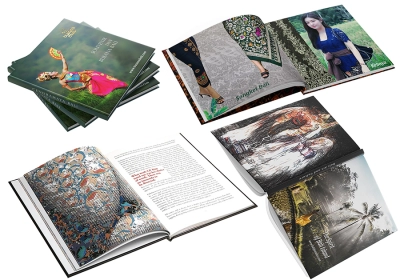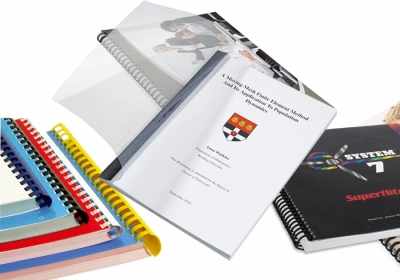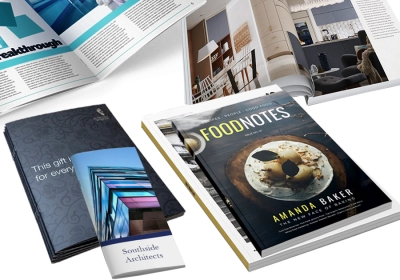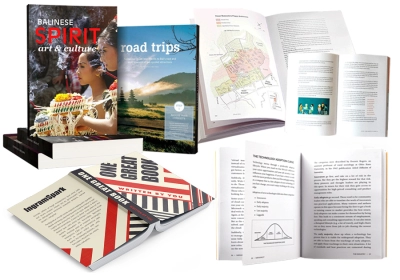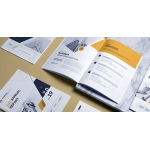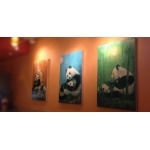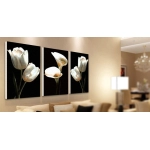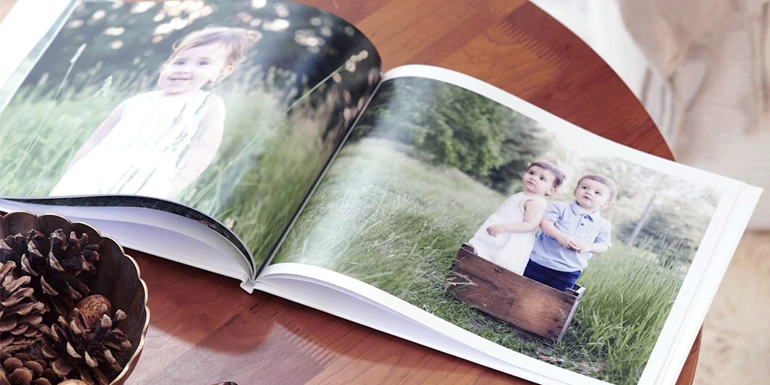
Difference Photography Book and Photo Albums
Technology has continued to progress so photos look great on your screen but nothing beats the gratification of flipping through pages and reminiscing about past memories.
In recent years, it seems there has been a change in preference in regards to traditional wedding photo albums and custom photo books. This change has caused many photographers and companies who provide photo solutions to ask the question, “What has caused consumers to prefer photo book over traditional photo albums?” Let’s explore the elements of each and the differences between the two photo collection alternatives.
Photography Book
Photography books are mostly made by professional photographers trying to showcase a body of work in one place. A common photo book size among landscape photographers is a Landscape (horizontal-bound on short edge) A4 because the format fits best with the ratios of their photographs. This means that they have less cropping to do to their photographs. We also see a lot of 21 x 21cm square photo books and A4 portrait photo books.
Photography books are a great way to display a unique arrangement of colors and textures present in photographs. Juxtaposing full images with up-close detail shots and/or solid swatches of color are recommended to help guide the viewer to the intended meaning of the photo book.
Photo Albums
Picture books make great gifts for family members, friends or employees. They are usually full of photographs from a certain event, a person’s life, vacation, school year, business trip, etc.
Some examples of a picture book are as follows:
- Birthday Picture Book
- Baby Picture Book
- Travel Photography Book
- Landscape Photography Book
- Anniversary book
- Memory Book
- Family Reunion Book
- Wedding Picture Book
- & so many more!
Photo albums have been used to vividly illustrate the stories of one’s past and protect an individual’s treasured memories. Traditionally, professional photographers would gather all the photos taken from an event and strategically organize them in a photo album of some type. The photos would be manually attached with various types of adhesive to pages that were supposed to protect and enhance the photos.
So if traditional photo albums have become the new faux pas of the photo industry, what has replaced it? Photo books, on the other hand, have made a statement in the world of photo solutions with their new sleek design and “trendiness” factor. To put it simply, a custom photo book is a printed bound book, much like a children’s picture book, that combines photos and, most times, text. Individuals can create and customize their photo books, something they couldn’t do with traditional photo albums, with special photo effects, custom text and other aesthetically pleasing features.
The sheer size of the two options is one of the most obvious differences between custom photo books and traditional leather photo albums. Many photographers have found that their clients love photo books because of their ability to lay flat, as opposed to a think binder-like book that comes complete with a gutter. It is obvious that photo books are far easier to display with their space-savvy design. Photo book believers have said that they love keeping a stack of custom photo books, which take up the space of what one leather photo album would, on the coffee table for friends and family to view at any given time.
Traditional photo albums, as just mentioned, have become relics of the past. Pulling a traditional photo album out of the closet only seems to date the pictures found within it. It is common for someone to say, “That was years ago, because those pictures in the old photo albums on the top shelf of the closet.” This only shows that people feel the need to be modern and “in the times.” No one wants someone to come over and comment, “Didn’t you get married last year? I didn’t know photographers still made traditional wedding albums?”
Consumers often rave about the customizable element of personalized photo books. While traditional photo albums had their run with customizable features, also known as “scrapbooking”, it doesn’t compare to what technology has created with custom photo books. You can now log on to specialty photography websites and create your own photo book by uploading the photos you wish to feature in your book from your computer. Popular photo sites have streamlined the personalized photo book creation process so that consumers can create their own book in less than 15 minutes.
One of the most attractive aspects of a photo book, when compared to a traditional photo album, is the price. Photo books can be created and purchased at a far less expensive price than a traditional photo album. Select photo books can be created and purchased for as low as $15. The difference in price is even different when you have to purchase all the “scrapbooking” paraphernalia to customize the photo album.
You may be asking yourself, “Why would someone ever opt to go with a traditional leather photo album when custom photo book present all these benefits?” I have found there are a few features of traditional photo albums that some consumers will always desire.
Just as some love the compactness of the photo books, there are consumers that want the thick and heavy photo album. Photographers have mentioned that some of their clients feel that a heavy, leather-bound book makes their photos carry more significance. Consumer have said, “When you pick up a photo wedding album and set it on your lap because of the weight, you feel that you are about to embark on a viewing experience of a significant event.”
Clients of photographers have also mentioned that they prefer a traditional photo album because of the fact that their photo albums from decades past still look as new as ever. Photo books have not been around long enough to know if they feature the longevity that photo albums do. Pictures tell stories and consumers want their stories to be told forever.
These are just some factors that may be the catalyst in regards to photo books becoming the new trend in the photography industry. Whether it’s a photo book or traditional photo album, be sure that your precious memories are well preserved for a long time to come.
What steps should I take for creating my photography or picture book?
Planning
The first step would be to sit down and outline a solid plan of attack. Will you have editors proofreading and editing your book? Do you need a graphic designer to help with your design?
Once you figure out those, you can continue on by mapping out the specifics of your book - how many pages you will need, what will go on each page, how many images you want on each page, will you be including any heading or paragraph text blocks, etc.
If you're wanting to brainstorm layout design, you can browse the available themes and photo templates in our photo book maker. These make it extra easy for you to just upload your photos into a template you select upfront. If you upload your photos in sequential order, they will drop into the theme in that order (like magic).
Choosing Your Size
When choosing the size of your photography or picture book, you must first think about what the sizes of your images are. Do you want them to be full page images or will you be placing multiple images on each page? As we mentioned above, a popular size among landscape photographers is a Landscape A4 book because the format fits best with the ratios of their photographs. This means that they have less cropping to do to their photographs. We also see a lot of and A4 portrait photo books.
Choosing Your Paper Stock
Another huge decision you need to make is what paper stock you will be choosing for the cover and inside papers. Sometimes this can get a little overwhelming with all the options offered, so you may want to order a free sample pack first in order to touch and feel the papers.
Depending on your personal preference, gloss and matte text paper will showcase your pictures and photography just right. Gloss text will make your colors appear more vibrant, but will have a glare. Matte paper will still make your colors pop, just without that extra shine. Some customers also enjoy an uncoated look, which mutes the colors a bit. If you have a cover weight cover paper (recommended), you may want to consider adding (UV) High Gloss finish to your cover. This helps provide an even higher gloss finish to the front and back covers, along with protecting against scratching and scuffing caused by frequent handling.
Our recommended paper combination is 260-310gsm Gloss or Matte laminate for the cover paper and 150-210gsm for the inside pages. If you have chosen a gloss cover paper for your cover stock, we highly recommend that you add a UV High Gloss finish for extra protection and to make your colors pop even more.
Choosing Your Binding
The third most important photography or picture book spec to decide upon is the binding type. Our most popular binding types are perfect bound and saddle stitch. We also offer spiral or wire-o, but these are not a common selection.
Binding depends on if you have a budget and how many pages are in your book.
Perfect Binding
If your photography or picture book has more than 40 pages or minimum 5mm - 40mm thick, perfect binding is the recommended binding type. It is the most popular binding type for photo books because it provides a durable, high quality attractive look that can’t be matched.
Perfect binding is the type of binding you see on magazines and softcover books at the store. It has a square spine that can be printed on and if the page count is high enough, you can also add text to the spine.
Saddle Stitch Binding
Generally, saddle stitch binding is most popular binding type across all products because of its low cost. But don’t let the price fool you - saddle stitch booklets are still very professional and high quality. If your photo book has between 8 and 40 pages (including cover), saddle stitch can easily be the right binding type for you.
Image Quality
It is very important to use high resolution (300+ dpi) images in your picture books and photography books. Since the main point of your book is to showcase quality photos, you want to ensure they don’t print pixelated or fuzzy, which may happen if you images have a resolution less than 300 dpi.
Printing a photography or picture book is a great way to share your passions, big life moments and more. Our vibrant colors will help you create a memorable picture book that you can give away to friends and family or sell in order to make a profit.

